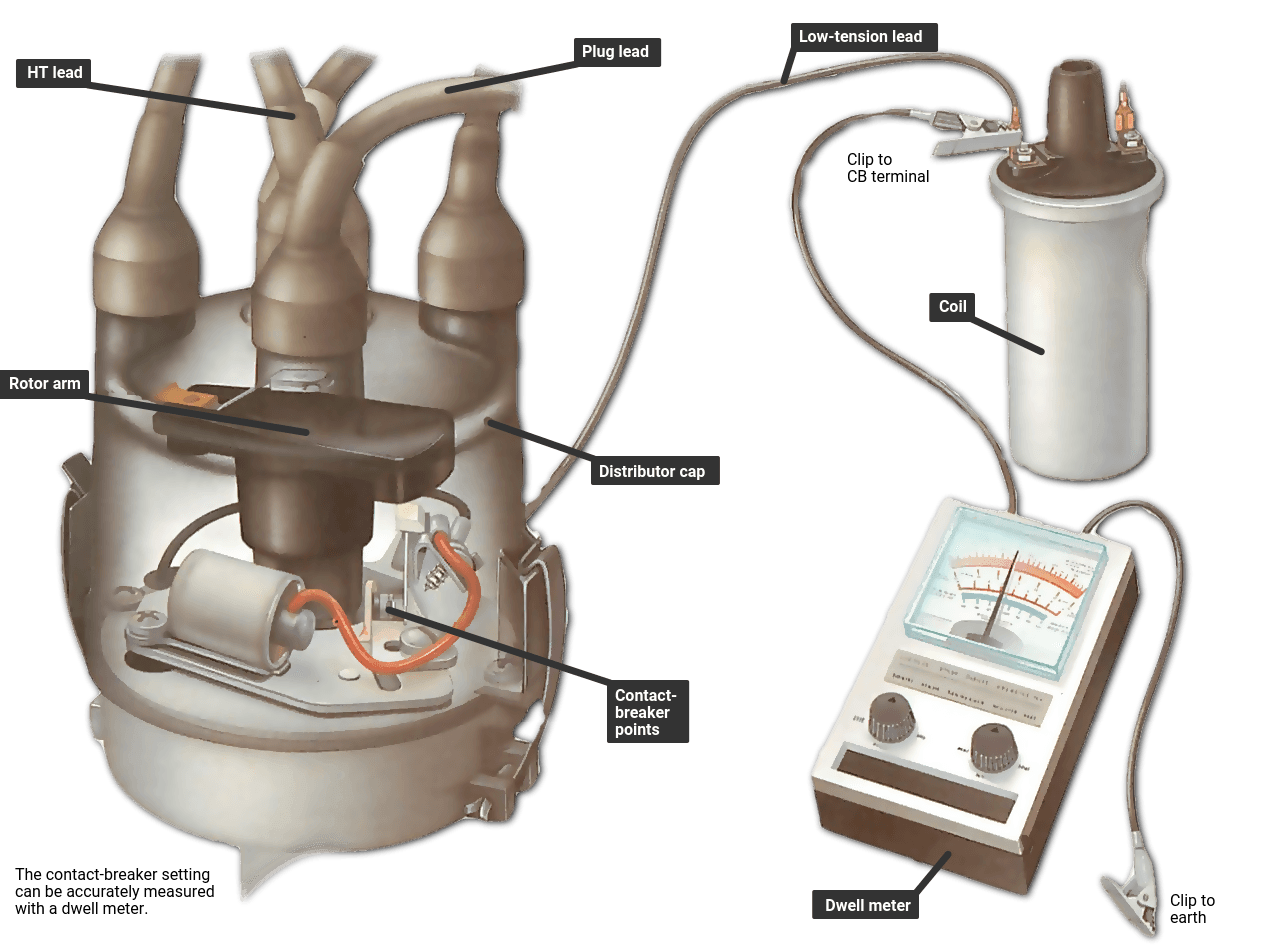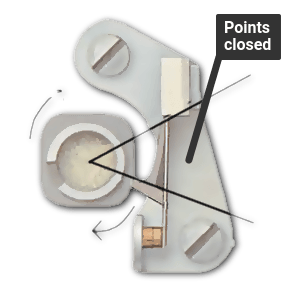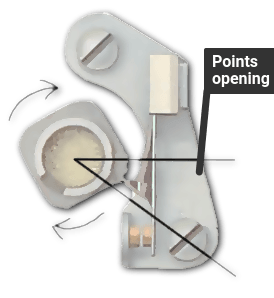How To Set Points Gap
When fitting new contact-billow points in the benefactor , the normal manner of checking the gap between them is with a feeler approximate .
Using a dwell meter

Points that accept been in utilize for some time develop a pinnacle on i face that corresponds with a crater on the other, caused by spark erosion as the points open up. When this happens, a feeler approximate no longer gives an accurate measurement of the gap.
A dwell meter measures the angle of rotation of the cam through which the points are opened and closed, and registers the dwell angle - the period when they are closed.
It can therefore exist used to check the gap on worn points with more than accuracy than a feeler gauge, and tin be used without removing the distributor cap and with the engine running. The meter tin also, of course, be used when fitting new points.
A dwell meter is usually part of an instrument used for various mechanical checks. Such instruments may exist sold as analysers or test meters, and take to be switched to dwell for a reading.
How a dwell meter works
When the benefactor shaft is rotating, the contact-breaker points open up as the heel of the moving point is pushed outwards by a lobe of the cam, and close while it is over the flat area between ii lobes.
Dwell angle

If, for instance, the angle of rotation between the centres of the lobes on the cam is xc degrees, the dwell angle - the menstruation with the arm over the flats and the points closed - may be 52 degrees; the remaining 38 degrees are taken up by the action of opening and closing. This would be a typical dwell bending for a four-cylinder engine .
A dwell meter connected between the distributor or ignition coil and earth registers the dwell angle on a scale , and must remain steady at the prescribed figure while the engine is running. If the dwell angle is not the same for all cylinders , the event is rough running and poor fuel economy considering the moment the spark-plug fires varies from cylinder to cylinder.
Opening angle

The dwell angle varies co-ordinate to the make of car; cheque it in a service manual. At that place are two scales on the meter, i for iv-cylinder engines and one for six-cylinder engines. Viii-cylinder vehicles are taken from the four-cylinder scale and halved.
Connecting the meter
Follow the maker'south instructions. Unremarkably one lead is connected to the side terminal of the distributor if it is outside the distributor body, or the CB (contact-breaker) final on the curlicue , and the other to earth.
Most modern cars have negative world: connect the blackness (negative) lead to world and the ruby-red ( positive ) lead to the distributor or roll.
On a vehicle with positive earth, connect the red (positive) lead of the meter to earth and the black (negative) atomic number 82 to the distributor or roll.
Measuring the dwell angle
If you have just fitted new contact-breaker points, set them to approximately the correct gap with a feeler gauge .
With the dwell meter connected, kickoff the engine and permit it settle to a smooth tickover. If it will not tick over steadily, cheque the crusade(southward) and rectify any faults .
The meter reading should stay steady at a steady engine speed. If information technology does non, increase the idling speed slightly until it does (Come across Preparing for carburettor adjustment ).
Compare the steady reading on the advisable scale with the desired dwell angle for your make of motorcar.
If it is besides high, the contact-billow gap is also small. If it is too low, the gap is as well wide.
Before you switch off the engine to adjust the gap, make the following checks. First ask a helper to press the accelerator to increase the engine speed slowly to about 1,000 rpm , and then let it drop back to idling speed while you note the reading.
The angle should remain well-nigh the same, with no more than two or 3 degrees deviation.
Secondly, increase the engine speed quickly to about 1,500 rpm, and so let it drib back to idling speed while you lot once more notation the reading.
The angle should again remain the aforementioned, fluctuating by no more than than two or three degrees.
Conduct out these 2 tests several times so that y'all tin can take an average of any differences in the readings.
If the reading constantly fluctuates more than 2 or three degrees, the benefactor-shaft bearing or accelerate-retard plate may be worn, or the cam itself damaged. Fit a new distributor (See Removing and refitting the distributor ).
Switch off the engine before making whatsoever adjustments necessary to the contact-breaker gap.
Adjusting the gap
With the meter even so continued, remove the distributor cap.
Using a spanner on the crankshaft caster, plow the engine by hand in its normal direction of rotation until the contact-breaker points are held fully open by one of the cam lobes .
Loosen the contact-billow fixings slightly (Come across Fitting and adjusting contact-breaker points ), on some distributors you may have to remove the rotor arm to do this, and suit the gap as needed. Reduce it to increase the angle if the reading was too depression; increase it to lower the angle if the reading was too high.
Supercede the rotor arm if removed, and the benefactor cap. Switch on the engine and check the dwell-meter reading over again. If the figure is withal not correct, switch off and reset the gap.
Keep the procedure until you obtain the correct reading.
Source: https://www.howacarworks.com/ignition-system/checking-the-dwell-angle

0 Response to "How To Set Points Gap"
Post a Comment